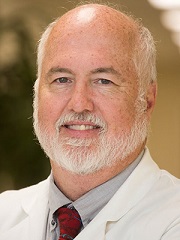Engaging the next generation of physicians in the business of healthcare
Note: The author will be a co-presenter on this topic at HFMA’s 2019 Annual Conference, June 23-26 in Orlando. The focus of the session will be on how organizations can engage new physicians in establishing a clinically driven revenue cycle.
At the University of South Alabama College of Medicine, we sought to improve the appointment-scheduling experience for patients and their families at our urban medical school’s general pediatric clinic, as well as improve the clinic’s no-show rate. We also wanted to provide education for clinicians regarding coding and billing to bolster our organization’s financial viability.
We used two primary mechanisms to achieve these goals.

Open-Access Quality Improvement Project (2016-17)
Difficulty obtaining timely appointments is a major obstacle to ensuring access to pediatric primary care. This barrier frustrates parents, clinicians and administrators. In a teaching setting for medical students and pediatric residents, having fewer opportunities to treat patients limits valuable exposure to, and thus efficiency in treating, pediatric disorders.
Patient complaints were common regarding unavailability of appointments for well-child visits and acute illness visits. Clinicians, including residents and faculty, reported significant no-show rates. We wanted to decrease those rates and promote healthy living and preventive care.
Scheduling templates were changed to list the last names of both the attending physician and the resident (e.g., Turner-Brown) from among a rotation of six faculty and 45 residents. The previous templates had been generic, listing “Attending 1,” “Attending 2,” etc. Patients were seen as residents and faculty were available, and there was no direct accountability for each resident. On the new templates, the specific pairing of resident and attending was identified as the providers of record.
Staggered start times were introduced to assist with room turnover. Senior residents and advanced practitioners, who generally are more efficient and need less supervision, started in the clinic at 8 a.m. and 1 p.m. Second-year residents started at 8:20 and 1:20, followed by first-year residents at 8:40 and 1:40. (First-year residents need attending physicians to personally verify histories and physicals, and teaching regarding the assessment and plan.)
Wave scheduling established a sequence in which well-child visits, lasting 30 to 40 minutes, were followed by an acute visit lasting 15 to 30 minutes, then a 15- to 20-minute break. (The shorter time slots for each type of visit were for advanced practitioners and senior residents). The break allowed time for charting, phone calls or other tasks, or extended time for addressing complex patient issues. Wave scheduling also introduced flexibility and allowed for caring for late-arriving patients.
Excel files with the staggered start times and wave scheduling were emailed to the staff responsible for creating scheduling templates. No-show rates soon dropped from 27% to 19% for sick visits and from 40% to 27% for well-child visits. Two years later, the combined no-show rate ranges from 15% to 18%.
Enhanced billing curriculum (2016)
After instituting a standard pediatrics curriculum in 2016, we recognized that the two-part topic on billing and coding was limited to very basic information. We decided to introduce three additional units of education, including eight articles for review and multiple vignettes for use in a three-part group discussion.
Prior to introducing this billing curriculum, we noticed a baseline pattern of underbilling and missed coding opportunities among faculty, advanced practitioners and residents. We provided additional reference materials, including a pediatric coding sheet containing frequently used E&M codes and CPT codes, along with a list of the top 10 missed pediatric coding opportunities.
Labels were created with CPT codes for office procedures, medications and questionnaires. Nursing staff distributed the labels to physicians and advanced practitioners.
As a result of the enhanced education, coding patterns have improved among faculty and advanced practitioners, although underbilling persists among residents.
Looking at the combined impact of the Open-Access Quality Improvement Project and the educational intervention, payments increased by 21%, from $2.852 million in 2017 to $3.454 million in 2018. This improvement shows the value of promoting a clinically driven revenue cycle.
His presentation will be part of the Leadership, Change Management, and Organizational Capability learning pathway at HFMA’s 2019 Annual Conference.





